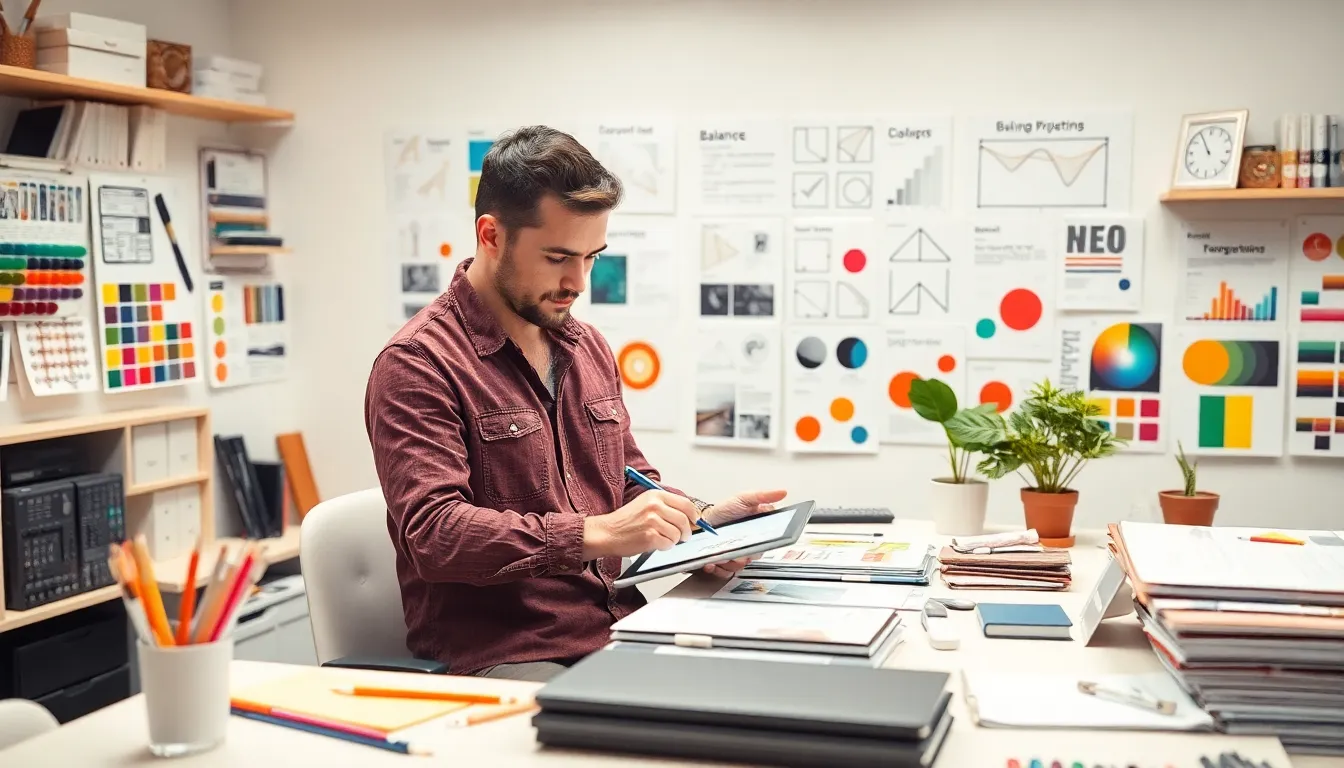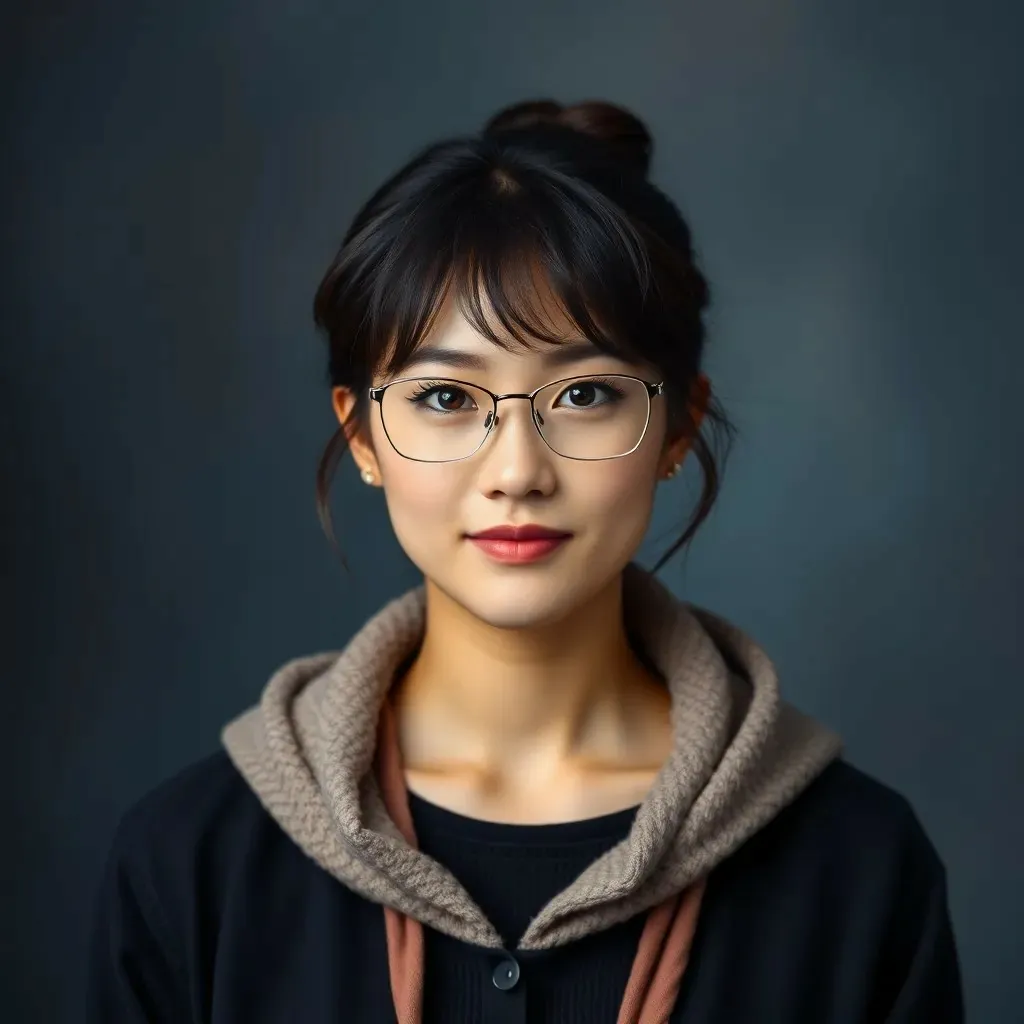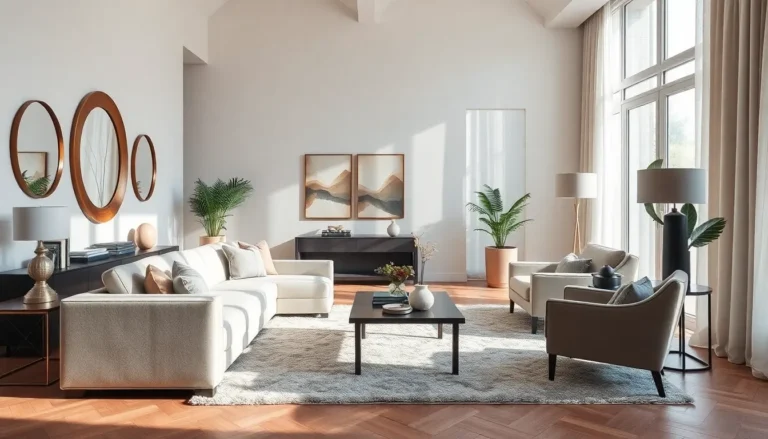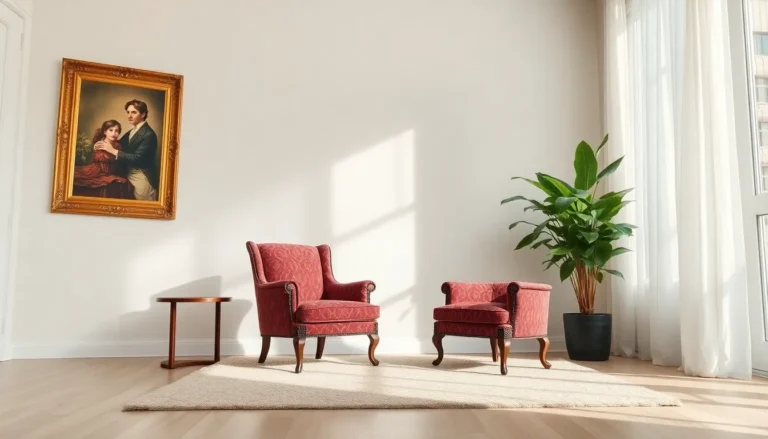Design isn’t just about making things pretty; it’s the secret sauce that transforms ideas into experiences. In a world where first impressions matter more than ever, understanding design dynamics can be the difference between a thumbs-up and a thumbs-down. From sleek interfaces to eye-catching graphics, the right design speaks volumes without uttering a single word.
Imagine walking into a room filled with chaotic colors and mismatched furniture—it’s a nightmare, right? Now picture a space where every element works in harmony. That’s the magic of design dynamics at play. It’s not just about aesthetics; it’s about creating a seamless flow that captivates and engages. Dive into the world of design dynamics, where creativity meets functionality, and discover how the right approach can elevate any project from ordinary to extraordinary.
Table of Contents
ToggleOverview of Design Dynamics
Design dynamics encompass the interplay between form, function, and the user experience within a given design. This concept extends beyond visual appeal, integrating psychological and emotional responses to create meaningful interactions. Effective design dynamics stimulate engagement by considering various factors such as color, layout, and material, ultimately enhancing the functionality of a product or space.
Employing principles of design dynamics can transform user experiences, making them more intuitive and satisfying. Research indicates that well-executed design dynamics lead to increased user satisfaction and loyalty. A study found that 94% of first impressions are design-related, underscoring the power of design to influence perceptions.
Professional designers analyze user needs to create designs that resonate on a deeper level. By identifying target audiences, they fine-tune elements that connect emotionally, fostering lasting relationships. Innovative use of technology also influences design dynamics; incorporating interactive elements generates excitement and invites participation.
Incorporating feedback loops into the design process enhances its evolution. Designers benefit from gathering user insights, which inform adjustments to improve performance and satisfaction. Testing various prototypes allows designers to discover the most effective solutions early in the creation process.
Furthermore, the collaborative approach is vital when exploring design dynamics. Involving stakeholders provides diverse perspectives that lead to richer ideas and solutions. Workshops, brainstorming sessions, and multidisciplinary teams create a fertile ground for innovative design thinking.
Altogether, understanding design dynamics equips designers with the tools necessary to elevate their projects and create impactful experiences that resonate with users.
Key Principles of Design Dynamics

Understanding the key principles of design dynamics is crucial for creating impactful experiences. These principles guide designers in enhancing functionality and user engagement.
Balance and Proportion
Balance refers to the distribution of visual weight in a design. It can be symmetrical or asymmetrical, both offering a sense of stability. Proportion relates to the size and scale of elements in relation to one another. Designers often apply the rule of thirds to create visually appealing layouts. This technique helps direct the viewer’s eye, fostering a harmonious experience. For instance, placing focal points according to proportionate sizes can enhance a design’s effectiveness. Successful use of balance and proportion encourages user comfort and satisfaction, reinforcing how design impacts perception.
Contrast and Unity
Contrast creates visual interest by highlighting differences between elements. Using contrasting colors, shapes, or sizes can guide attention to key areas, enhancing comprehension. Unity, on the other hand, ensures all components work together cohesively. Achieving unity involves consistent styles, color palettes, and thematic elements that bond the design. For example, a well-designed website may harmonize typography with color schemes to enhance the user experience. Effective contrast and unity strengthen user engagement and create memorable interactions, ultimately elevating the overall design quality.
The Role of Design Dynamics in User Experience
Design dynamics significantly shape user experience by enhancing interaction and eliciting emotional responses. Effective design creates opportunities for meaningful user engagement, ultimately boosting satisfaction and loyalty.
Enhancing Interaction
Interactive elements play a crucial role in encouraging user participation. Consideration of intuitive navigation and clear calls to action helps users understand how to engage with a product or service. Designers employ feedback mechanisms, such as animations or prompts, to confirm user actions, fostering a sense of accomplishment. Connection among interface elements makes navigation seamless, guiding users through experiences efficiently. Increased interactivity often leads to deeper engagement, as users feel more involved in the process.
Emotional Responses
Design dynamics also impact emotional responses, influencing how users feel during interactions. Colors convey specific emotions, with warm tones often stimulating excitement and cool tones promoting calmness. Incorporating familiar visual patterns can evoke nostalgia, making users feel connected to a brand. Designers strategically use typography and imagery to reinforce brand identity, shaping perceptions at a subconscious level. Engaged users tend to develop loyalty, driven by positive emotional associations tied to their interactions.
Design Dynamics in Various Disciplines
Design dynamics play a crucial role across multiple disciplines, influencing how users interact with a product or service. Each field employs distinct strategies to enhance user experience.
Graphic Design
Graphic design utilizes the principles of design dynamics to convey messages effectively. Color schemes can evoke emotions and maintain brand identity, while layout enhances readability and guides the viewer’s journey. Designers focus on balancing visual elements to ensure harmony, using contrast to highlight critical information. Typography also contributes to the overall tone, with font choices affecting perception and engagement. Research shows that impactful graphic design increases retention rates, as users are 94% more likely to engage with well-designed visuals. Analyzing user feedback allows for continual improvement in designs, creating more relatable and memorable experiences.
Product Design
Product design relies heavily on design dynamics to ensure functionality and aesthetic appeal coexist. Physical interaction with a product is influenced by ergonomic considerations, which prioritize comfort and usability. Shape and material selection can significantly impact user perception, with tactile elements inviting exploration. Product designers often employ iterative prototyping, gathering user insights to refine features, enhancing satisfaction. Data indicates that 70% of customers prefer products with an intuitive design. User-centered approaches are essential, leading to innovations that align closely with consumer needs and preferences, ultimately generating stronger brand loyalty and improved user experiences.
Future Trends in Design Dynamics
Emerging trends in design dynamics focus on sustainability and inclusivity. Designers increasingly prioritize eco-friendly materials to minimize environmental impact. Innovations in technology play a crucial role, with augmented reality and virtual reality enhancing user experiences. User-centered design continues to evolve, reflecting changing demographics and diverse needs.
Personalization also gains prominence, allowing designers to create tailored experiences. Brands harness data analytics to understand user preferences and craft bespoke solutions. Minimalist design remains popular, emphasizing simplicity and functionality while reducing clutter. This approach often leads to more intuitive user interactions.
Interactive design elements contribute significantly to engagement. Gamification techniques encourage participation, transforming passive users into active contributors. Engaging storytelling through visual elements shapes how users connect with products and brands. Enhancements in typography and color psychology deepen emotional connections, influencing choices and loyalties.
Collaboration across disciplines becomes essential for innovation. Designers from various fields unite to share insights and create holistic experiences. As remote work becomes commonplace, digital collaboration tools facilitate communication among creative teams.
Data-driven insights guide design decisions, enabling continuous improvement and responsiveness to user feedback. Tracking analytics offers valuable information, allowing for iterative design processes. Designers who adapt quickly to these trends enhance the user experience and maintain relevance in a competitive landscape.
Design aesthetics evolve alongside technology, with 3D modeling and animation gaining traction. Dynamic visuals capture user attention, making interactions more enjoyable. As the design landscape transforms, staying attuned to these trends will be vital for fostering meaningful user connections and crafting impactful experiences.
Design dynamics play a crucial role in shaping user experiences and fostering emotional connections. By integrating principles like balance and proportion with innovative technology, designers can create engaging environments that resonate deeply with users. As trends evolve towards sustainability and personalization, it’s essential for designers to remain adaptable and responsive to user feedback.
The impact of effective design extends far beyond aesthetics; it influences perceptions and builds lasting relationships with audiences. Embracing a collaborative approach and leveraging data-driven insights will empower designers to craft meaningful experiences that not only captivate but also inspire loyalty. In this ever-changing landscape, understanding and applying design dynamics remains key to elevating projects and creating extraordinary outcomes.








